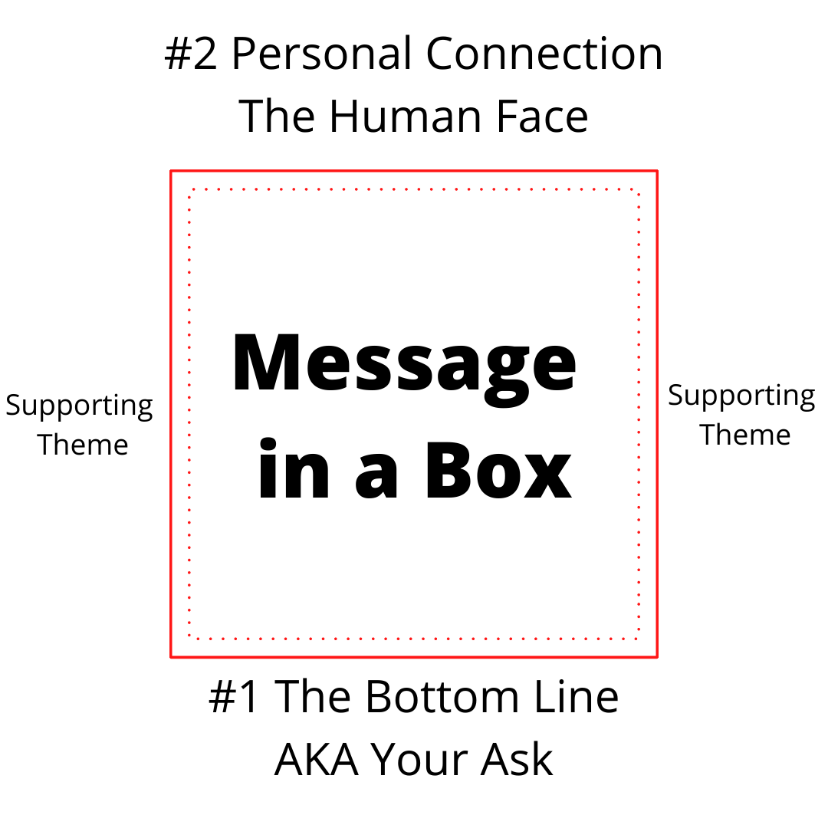Legislative Advocacy: Communicating with Congressmembers
Dr. Elizabeth Lehto
Why State and Federal Advocacy Matters
Every day there are rules, regulations, laws, and programs that are being implemented or changed by government entities that effect our patients and the practice of medicine. As physicians, we have the unique opportunity to share our expertise and provide insight that would not otherwise be considered when creating these policies.
Legislative Process 101
Any senator or representative can develop a legislative proposal. Once it is introduced it becomes a bill. Those who introduced the bill can recruit other members to support or cosponsor the legislation. Once introduced, the committee chairs can choose to hold a hearing on the bill, schedule a mark of the bill (where committee members offer amendments, change the bill, and send the bill to vote), or take no action on the bill. Additionally, the House Speaker or Senate Majority Leader may choose to bypass committees and bring legislation directly to the floor.
House bills begin with HR, senate bills begin with an S. Bills are voted for in the chamber they are introduced, and then they go to the other chamber for voting (so a bill introduced in the house will be voted for in the house first and then, if it passes the house, will move to the senate for voting). Bills passed by both chambers will go to the governor (state level) or president (federal level) who can either sign or veto the bill.
Federal bills can be found on congress.gov https://www.congress.gov/. Billwatch (https://kentucky.gov/Services/Pages/billwatch.aspx) is a tool for tracking legislation during the Kentucky legislative session. These tools can be used to research bills and help guide who is best to contact to express your support or opposition to the bill.
Crafting Your Message
There are many strategies when crafting a message, one of which is the message in a box. The message in a box has four components.
First is the bottom line, also known as the ask. This is the request you are making of your congress person, for example, “We ask that you support house bill X.”
Second is the personal connection. Telling a story helps put a face to the bill and can help strengthen your message. For example, “As a physician I see the ill effects of X every day on my patients, in fact one of my patients little Chris…”
The third and fourth component are two themes of your choice that support your cause. This is what you think is important about the cause. It can be helpful to use data to help strengthen your point.
Who Do You Contact?
Congressional offices track constituent correspondences. All phone calls, meetings, and emails are tracked.
Contact information can be found online for your senator (https://www.senate.gov/senators/senators-contact.htm), house representative (https://www.house.gov/representatives/find-your-representative), as well as your state representatives (for Kentucky https://apps.legislature.ky.gov/findyourlegislator/findyourlegislator.html)/
There are many ways to get in touch with legislators. Deciding on which method to use depends on what type and how much information you want to share with the office, an existing relationship you might have with the office, and the timing for the ask.
Phone Calls
Talking to a staff member over the phone is the most immediate way to have your opinion tracked by a congressional office. Both voicemails and completed phone calls are tracked, so don’t be discouraged if you reach a voicemail. When making a call be sure to be brief and precise, mention that you are a constituent, and mention that you are a physician.
Email can be an efficient way to voice your opinion and have it tracked. While most representatives have a generic .gov email address, sending a correspondence through a legislators .gov website is more efficient (unless you have the direct email of a staff member or congressperson).
Snail Mail
This can take the longest time but is often more personal than sending an email. This method is best used when there is some time between your correspondence and when the bill is being voted on. It is also a good method to send thank you notes after an in-person meeting.
Social Media
Social media can be a great way to engage, but it is not an official correspondence. Social media is not tracked as it can be difficult to prove you are who you say you are. However, it is still a useful tool to raise awareness for an issue or to thank a congress member for a meeting.
Face to Face Meeting
Meeting with a congressperson either in person or virtual may seem intimidating, but helps the congressperson put a face to the issue you are there to discuss.
Several organizations have Advocacy Days where several people advocate together, often with training on structuring meetings. This can be helpful for those who are new to legislative advocacy.
Examples include:
Kentucky Children’s Day at the Capitol https://kyyouth.org/childrens-advocacy-week/
American Academy of Pediatrics Advocacy Conference https://shop.aap.org/2021-aap-advocacy-conference/
American Medical Association National Advocacy Conference https://www.ama-assn.org/health-care-advocacy/federal-advocacy/national-advocacy-conference
Additional Resources
For more information and tips for becoming a successful advocate at the state and federal level
AAP Advocacy Guide https://downloads.aap.org/AAP/PDF/aap_advocacy_guide.pdf
AAP Training Modules https://www.aap.org/en/advocacy/advocacy-training-modules/
American Medical Association Advocacy Resource Center https://www.ama-assn.org/topics/advocacy-resource-center
Kentucky Medical Association Advocacy in Action https://kyma.org/aiamonth/
Elizabeth Lehto, D.O.
University of Louisville | UL · Department of Pediatrics | Doctor of Pediatric Emergency Medicine
Dr. Elizabeth Lehto is a Pediatric Emergency Medicine Attending at Norton Womens and Children’s Hospital. Dr. Lehto attended Midwestern University Arizona College of Osteopathic Medicine and completed her residency and fellowship at the University of Louisville.






